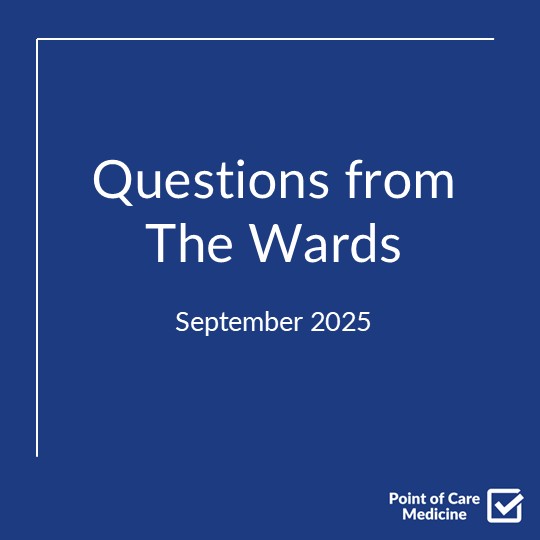Audio
Video
Introduction
Post-cardiac arrest care is a complex and challenging process that requires a systematic approach and attention to detail. In this blog post, we have compiled a list of top clinical pearls for working up and managing patients post-cardiac arrest.
Maintain Hemodynamics
It is essential to maintain hemodynamics by keeping the blood pressure above 65 mmHg with vasopressor infusion such as epinephrine and norepinephrine. Consider fluid administration if the patient needs it. The post-arrest EF on TTE is usually reduced due to stress cardiomyopathy and reperfusion injury, but often improves with time. You may also need pressor due to BP drop with sedation.
Consider ACS Workup
If the patient wakes up and follows commands, consider getting an EKG and consider the Cath lab if there's concern for STEMI. The COACT Trial showed that post-arrest patients go to cath lab if there is evidence of STEMI, otherwise its okay to wait for the results of neuroprognostication since waiting showed no difference in mortality at 90 days (NEJM, 2020)
Craft Your Assessment
Collect data on the patient's history and etiology of the arrest, including how long the patient was down, how long the patient received CPR, and what medications were given. Patients who do not receive prompt CPR, especially in the field, have very poor outcomes.
Get a CT Head
Plan on getting a CT head at the earliest convenience. One of the most prominent signs of hypoxic brain injury on head CT is the loss of the usual distinction between the outer gray matter ofthe brain and the inner white matter. Additionally, the clear boundaries of deep gray matter structures become less defined. These changes are considered to be early indications of brain swelling, which is primarily caused by cytotoxic edema.
Long-Term Electroencephalographic Monitoring (LTM)
Consider long-term electroencephalographic monitoring (LTM) to look for seizure activity or brain wave activity. Myoclonus Status Epilepticus is spontaneous repetitive movement not responding to treatments and that are not consistent with seizures. Presence of this potends a poor prognosis.
Temperature Targeted Management (TTM)
TTM aims to improve neurological outcomes. In general, the goal will be 36 degrees since a trial of 33 vs. 36 showed no difference in all cause mortality or neurological outcomes (NEJM, 2013) The general idea is to avoid fevering. However, you should note that this is still an area of active debate, and you should prioritize your units protocols.
Use an adaptive cooling system for 24 hours, followed by rewarming.
Prevent Shivering
Shivering happens more commonly at 36 degrees vs 32 - at 30-32 degrees your shivering response is not working anymore. Shivering can lead to lactic acidosis, rhabdo, and elevated ICP
To prevent shivering, schedule Tylenol Q6 during the cooling period. Other medications to prevent shivering include Buspirone, magnesium, Precedex, Zofran, or even fentanyl.
Treat empirically for aspiration pneumonia with amoxiclav versus ceftriaxone for 48 hours or just treat if there's evidence of underlying pneumonia.
Aspiration Pneumonia Prophylaxis
Treating for aspiration pneumonia is not the worst idea - you will be masking fevers with temperature management, and many people who arrest and get intubated are at risk - up to 20-30% of patients. You can check a CXR and treat empirically with amox-clav vs CTX for 48 hours.
Neuroprognostication
Prepare for neuro prognostication at the 72-hour mark. For sedation, prefer propofol and Precedex over fentanyl and versed. Note, if the patient ever at any point examines to be brain dead, it doesn't really make a difference when you actually do that exam.
Look for Complications
After CPR, look for complications such as pneumothorax, hemothorax, splenic, and liver lacerations, and any rib fractures. Damage associated with cardiac arrest (aside from CPR) is due to ischemia, but also whole-body reperfusion injury that leads to SIRS from a cytokine surge.
If you remember nothing else:
Identifying the cause of the arrest is more important than focusing on temperature management. In general, TTM goal should be 36 degrees with the intent of avoiding fevers. Other care is based around addressing aspiration, treating shivering, and not interfering with neuroprognostication at 72 hours. EF post-arrest will likely be reduced, but depending on etiology can recover.








.png)
